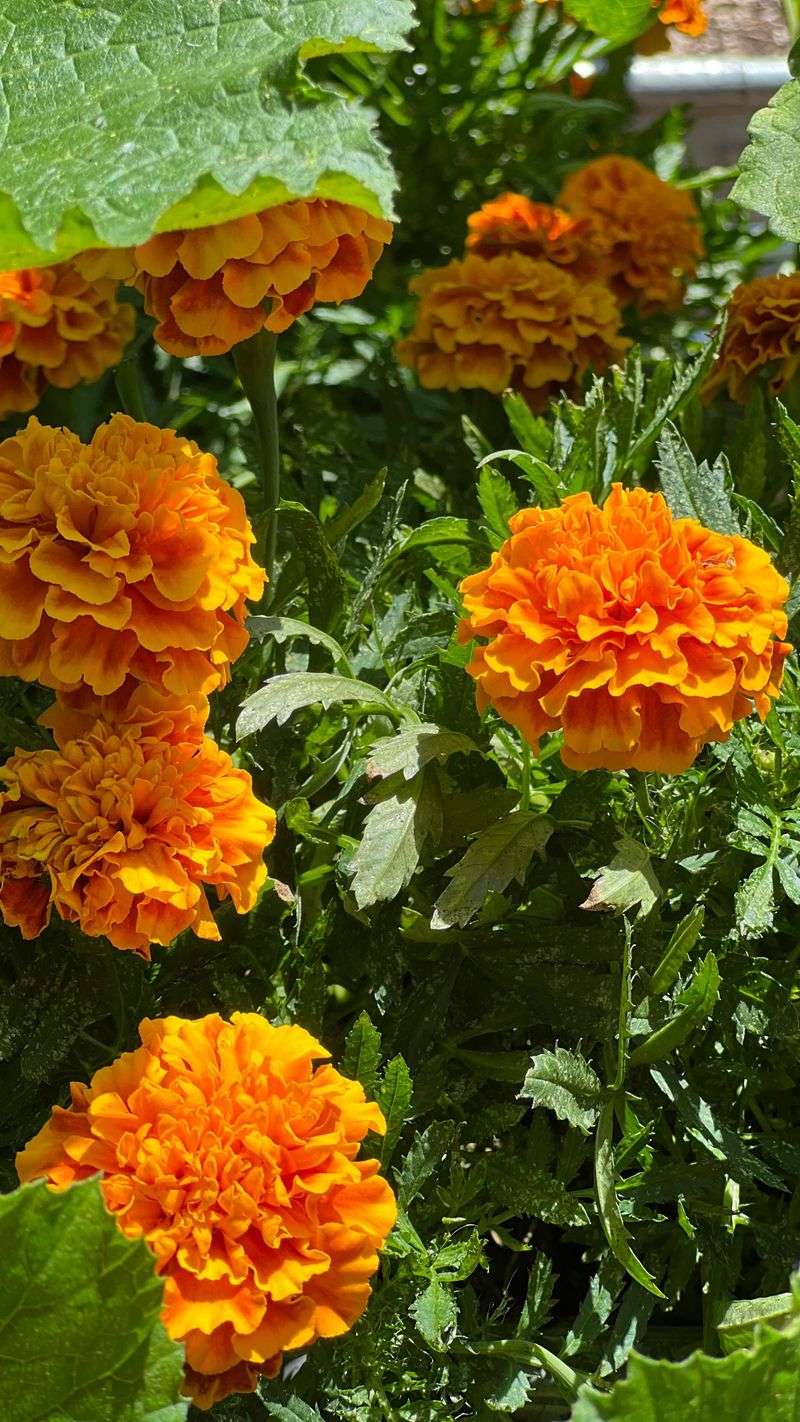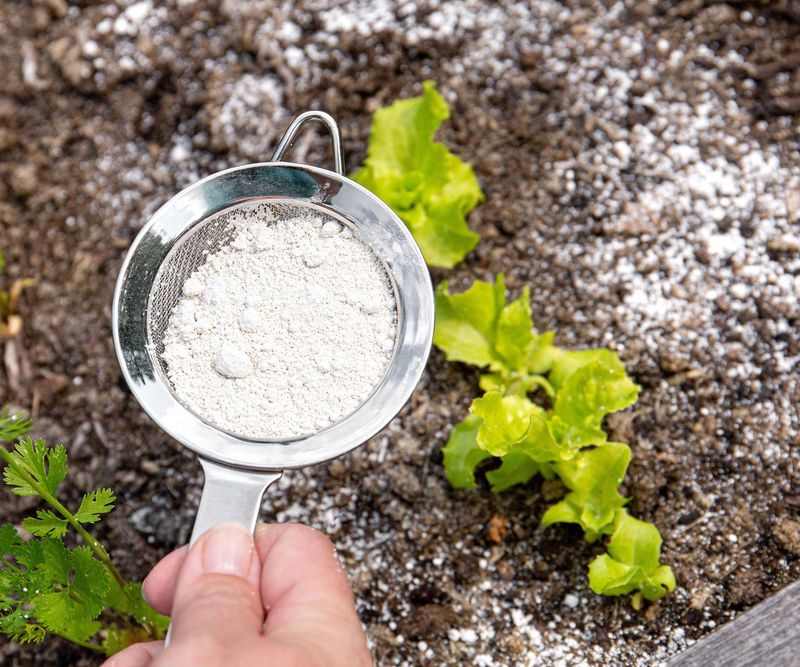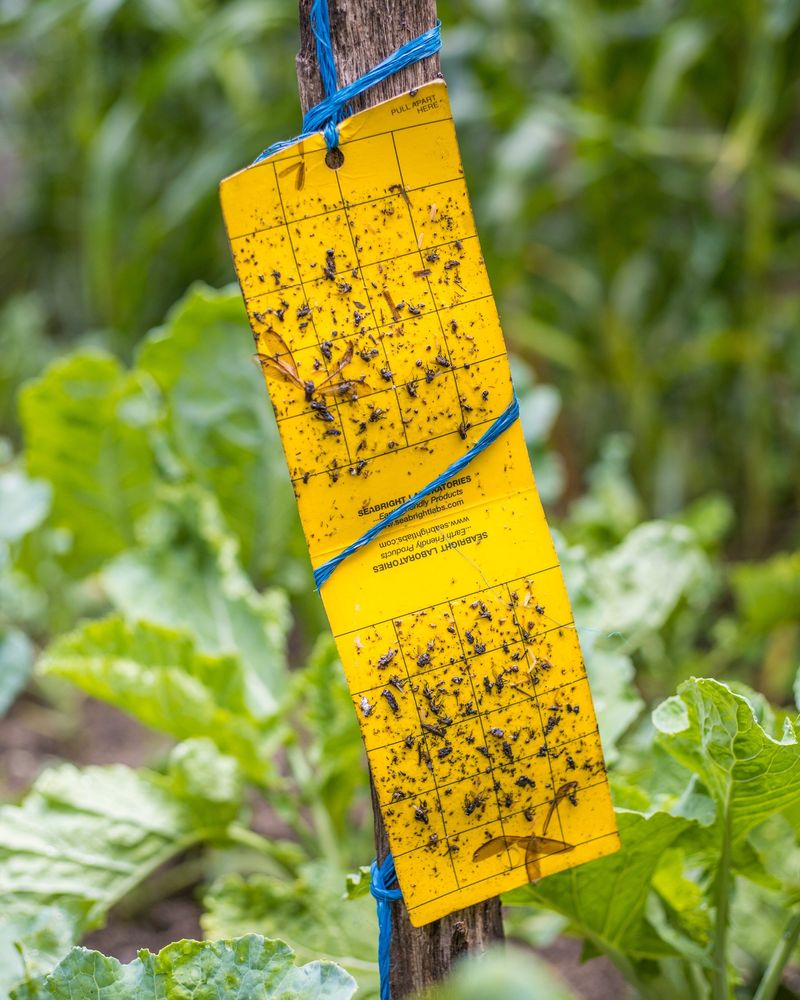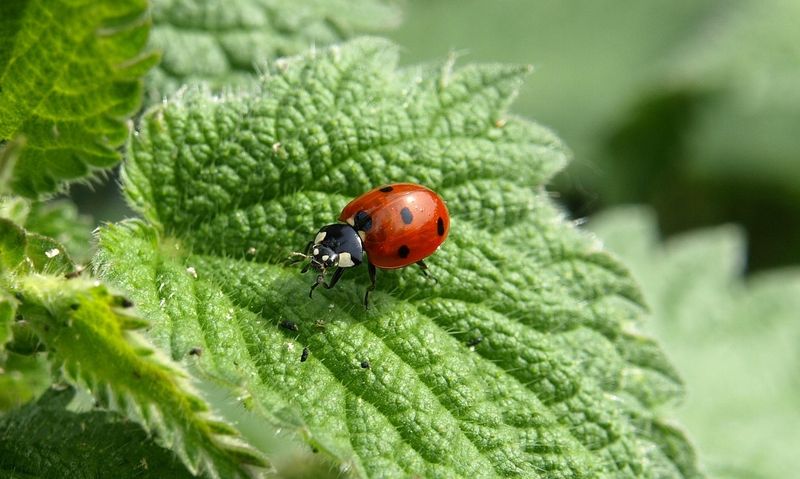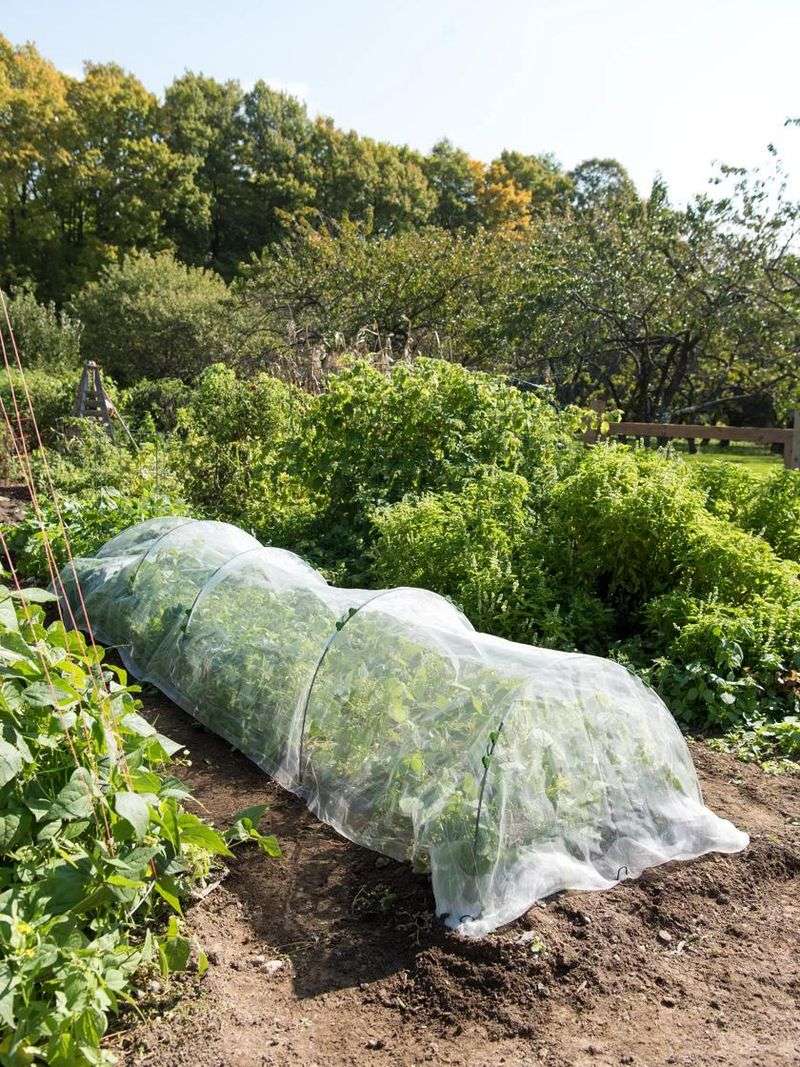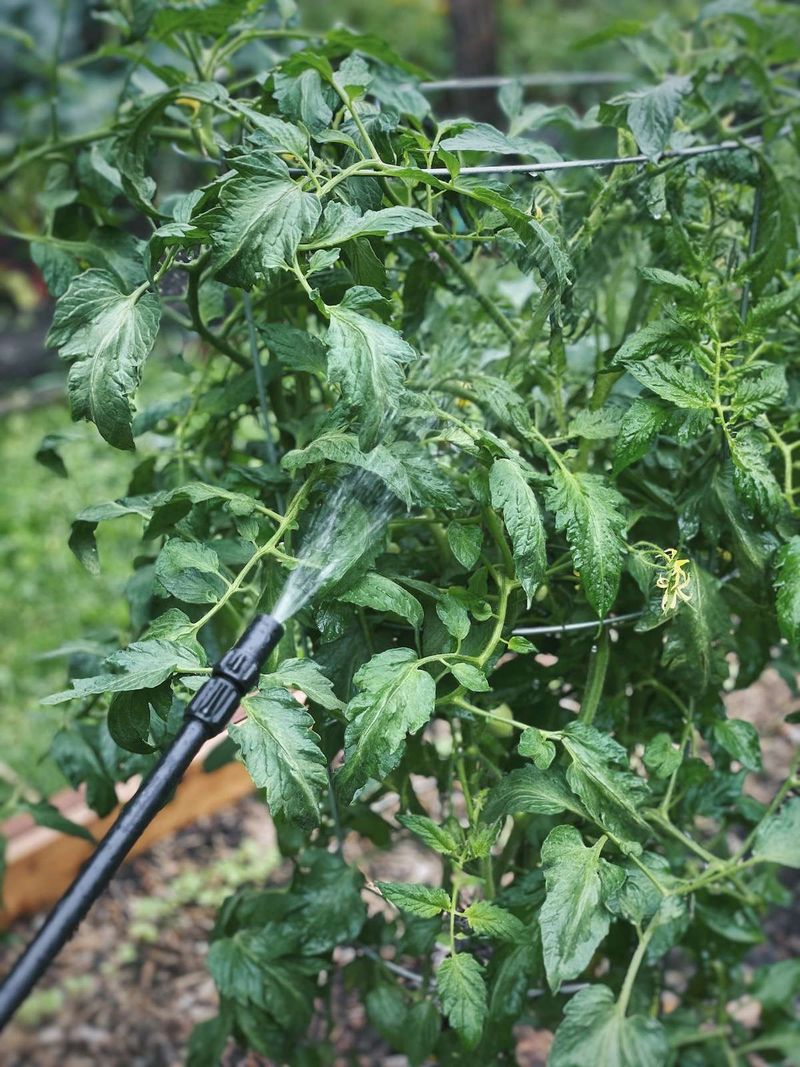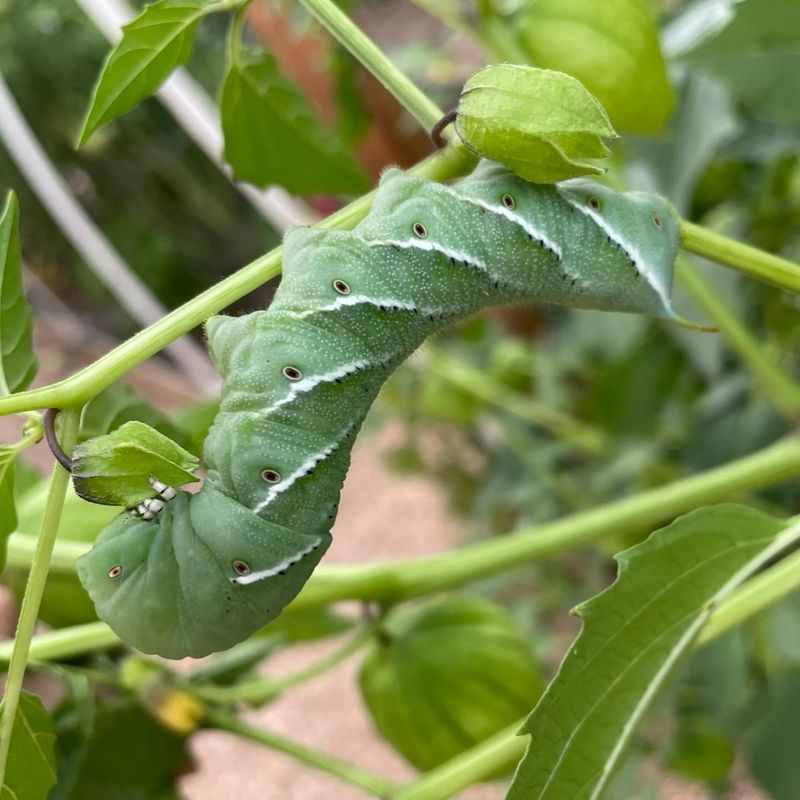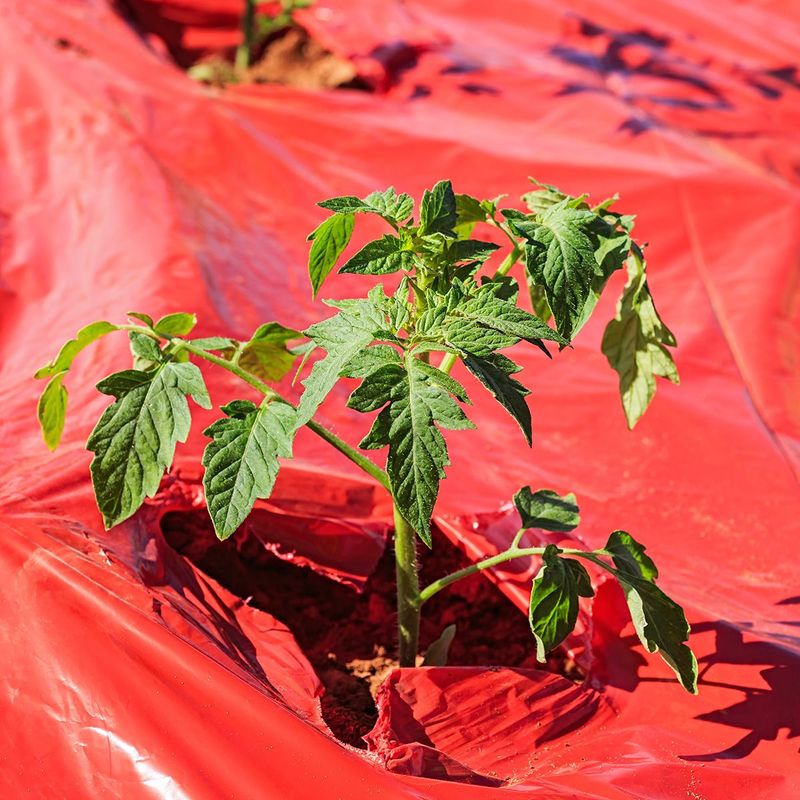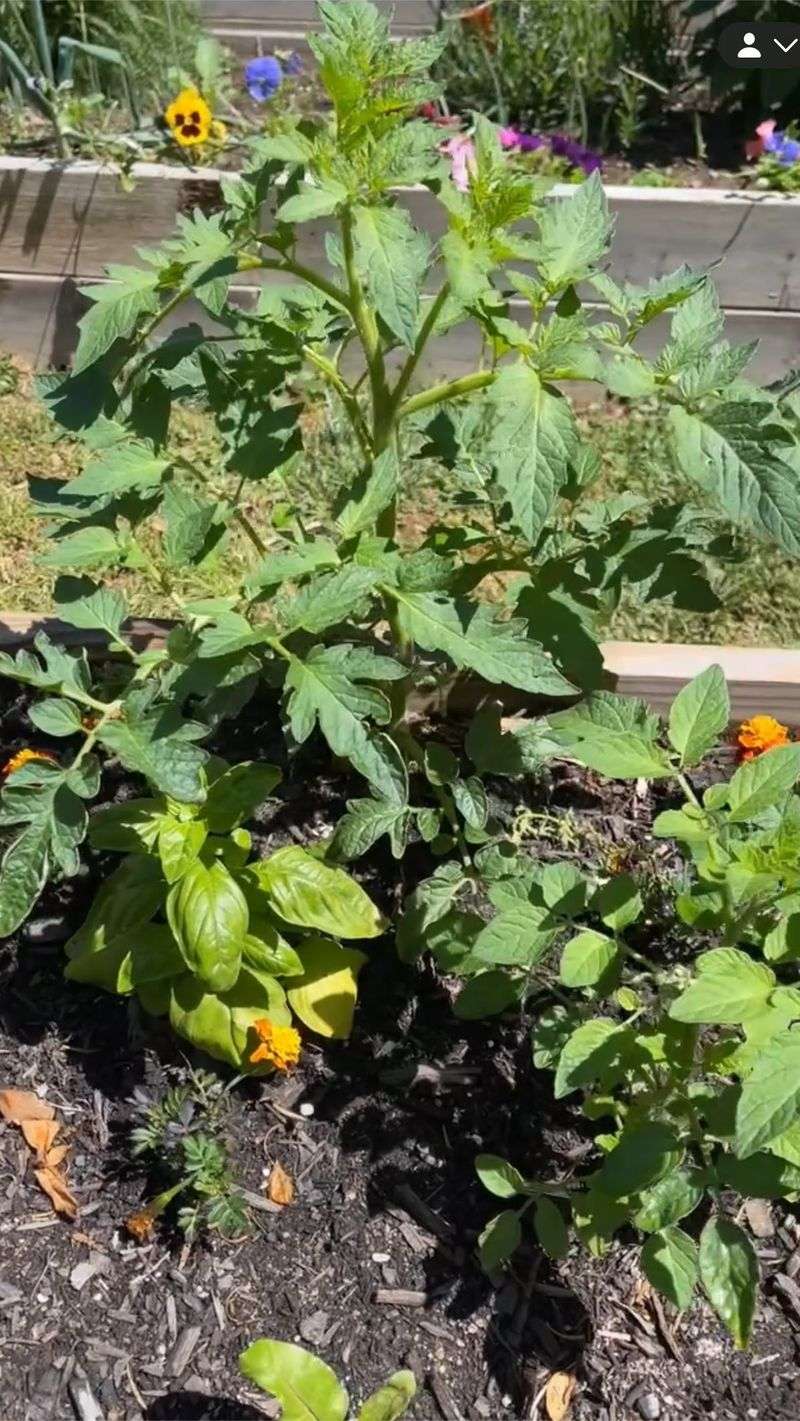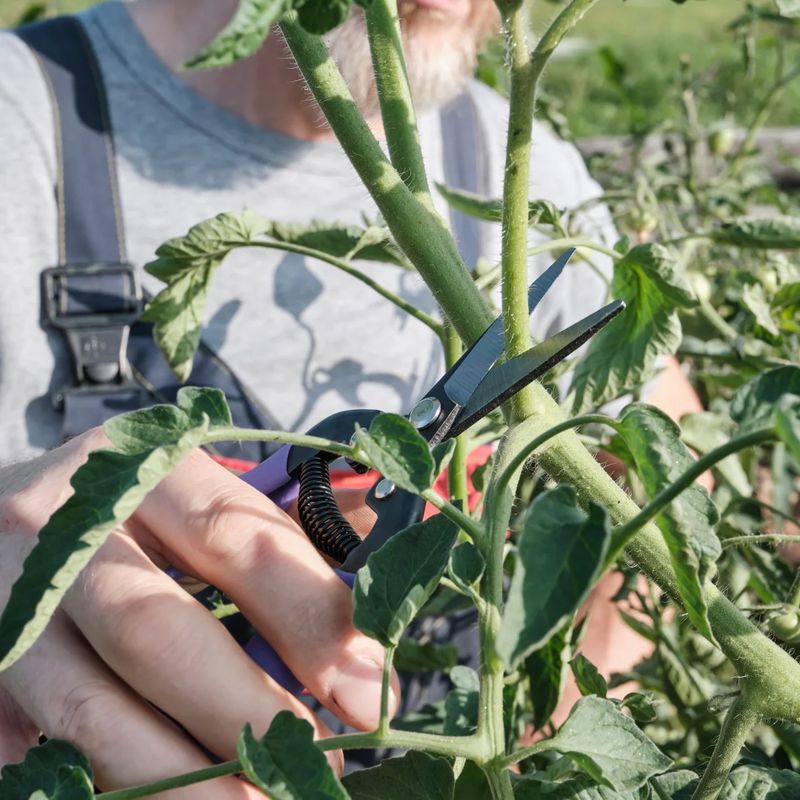Growing juicy tomatoes can feel like a battle against hungry bugs and sneaky diseases. Nothing’s more frustrating than watching pests destroy your carefully tended plants before you get to enjoy a single bite.
Fortunately, experienced gardeners have developed clever strategies to protect tomato plants without harsh chemicals, while avoiding common mistakes that practically roll out the red carpet for unwanted visitors.
1. Plant Marigolds as Natural Bodyguards
Marigolds aren’t just pretty faces in your garden—they’re working hard to protect your tomatoes. Their roots release chemicals that repel nematodes and other soil pests that damage tomato roots.
Many gardeners swear by planting these bright orange and yellow flowers around the perimeter of vegetable beds. The strong scent also confuses many flying insects, making it harder for them to locate your precious tomato plants.
2. Sprinkle Diatomaceous Earth Around Plants
This powdery substance looks harmless to us but acts like tiny shards of glass to soft-bodied insects. Made from fossilized algae, diatomaceous earth creates a barrier that cuts through the exoskeletons of crawling pests like slugs, aphids, and tomato hornworms.
Apply a circle around your tomato plants after rain or watering has dried. Remember to reapply after heavy rain since water washes it away. Food-grade versions are safe to use around edible plants.
3. Create a Sticky Trap Defensive Line
Yellow sticky traps exploit the fact that many tomato pests are attracted to bright colors. These simple traps catch whiteflies, aphids, fungus gnats, and leaf miners before they can settle on your plants.
Hang several traps at plant height throughout your tomato patch. Check them regularly and replace when they become covered with insects. Commercial versions work great, but you can also make your own by spreading petroleum jelly on yellow cards.
4. Brew Homemade Garlic Spray
Garlic’s sulfur compounds make it a powerful, natural insect repellent that bugs absolutely hate. Crush several cloves in water, let them steep overnight, then strain and add a few drops of dish soap to help it stick to leaves.
Spray this pungent mixture on tomato foliage weekly during pest season. The smell dissipates quickly for humans but continues to repel aphids, spider mites, and many beetles. Bonus: this spray also helps prevent certain fungal diseases that plague tomatoes.
5. Deploy Beneficial Insects as Allies
Ladybugs, lacewings, and praying mantises are the special forces of garden pest control. These beneficial predators feast on aphids, mites, and other common tomato pests while leaving your plants untouched.
Purchase these helpful insects from garden centers and release them at dusk when they’re less likely to fly away. Creating habitat with diverse flowering plants encourages them to stick around. One ladybug can devour up to 5,000 aphids in its lifetime!
6. Install Row Covers During Critical Growth
Floating row covers create a physical barrier between pests and your precious tomatoes. These lightweight fabric sheets allow sunlight, air, and water to reach plants while keeping insects out.
Secure the edges with soil or pins to prevent bugs from sneaking underneath. Remove covers temporarily during flowering to allow pollinators access unless you’re willing to hand-pollinate. This method particularly excels at stopping tomato hornworms and fruit flies before they can cause damage.
7. Apply Neem Oil for Multi-Pest Protection
Neem oil works as both a repellent and growth disruptor for many tomato pests. Extracted from neem tree seeds, this natural oil interferes with insects’ hormonal systems, preventing them from feeding and reproducing.
Mix according to package directions and spray on leaves every 7-14 days. Most effective when applied in the evening to prevent leaf burn. While safe for humans, neem disrupts the life cycle of aphids, whiteflies, and spider mites that would otherwise feast on your tomatoes.
8. Hand-Pick the Hornworms at Dusk
Tomato hornworms—those giant green caterpillars with horn-like projections—can devour entire tomato plants overnight. Their camouflage makes them nearly invisible during daylight hours, but they’re easier to spot when actively feeding at dusk.
Wear gloves and search the underside of leaves during evening hours. Drop hornworms into soapy water or relocate them far from your garden. Check daily during peak season (July-August). Their droppings—small black pellets—often give away their location.
9. Mulch with Red Plastic
Red plastic mulch serves double duty in your tomato patch. Studies show it confuses certain pests like aphids while reflecting specific light wavelengths that actually boost tomato growth and fruit production.
Lay sheets of red plastic mulch around plants, cutting holes for stems. Secure edges with soil or landscape pins. The bright color disorients flying insects, making it harder for them to locate your plants. As an added benefit, the plastic helps retain soil moisture and prevents soil-borne diseases from splashing onto leaves.
10. Rotate Crops Yearly
Crop rotation breaks the life cycle of pests that overwinter in soil. By changing where you plant tomatoes each season, you prevent specialized pests from building up populations year after year.
Never plant tomatoes where other nightshades (peppers, eggplants, potatoes) grew the previous year. Wait at least 3 years before returning tomatoes to the same spot. Many tomato pests and diseases can survive in soil but die off without host plants. This simple planning step dramatically reduces pest problems.
11. Water at the Base, Not the Leaves
Proper watering technique keeps foliage dry, deterring fungi and certain pests that thrive in moist environments. Wet leaves create perfect conditions for tomato blights, which attract secondary pests to weakened plants.
Use soaker hoses or drip irrigation to deliver water directly to the soil. Water deeply in the morning so any splashed leaves can dry quickly. This simple habit prevents the humid microclimate that leaf-loving pests prefer, while also conserving water and reducing disease pressure.
12. Introduce Companion Herbs
Aromatic herbs like basil, cilantro, and mint confuse pests with their strong scents, making it harder for insects to locate tomato plants. Basil particularly excels at repelling tomato hornworms and thrips while improving tomato flavor.
Plant these fragrant herbs between tomato plants or around the perimeter of your patch. The diverse plantings create a natural barrier that masks the scent of tomatoes. Plus, you’ll have fresh herbs for your tomato dishes! Avoid planting dill nearby, as it attracts tomato hornworms.
13. Prune Lower Branches
Removing the lowest branches of tomato plants creates a gap between soil and foliage that many pests can’t cross. This technique, called “legging up,” prevents soil-dwelling insects from easily climbing onto plants.
Use clean scissors to remove branches that hang within 6-8 inches of the ground. This also improves air circulation, reducing humidity that attracts pests. The pruned area makes it easier to apply mulch and monitor for crawling insects that might attempt to scale your plants.
14. MISTAKE: Skipping Regular Inspection
Many gardeners only notice pest problems after significant damage has occurred. Early detection is crucial—most infestations start small and can be managed easily if caught promptly.
Develop a habit of checking the undersides of leaves where pests often hide. Look for tiny holes, discoloration, or eggs clusters at least twice weekly. Morning inspections with a magnifying glass reveal problems before they explode into full infestations. Five minutes of regular scouting saves hours of pest management later.
15. MISTAKE: Over-Fertilizing with Nitrogen
Excessive nitrogen creates lush, tender growth that acts like a pest buffet. Plants pumped full of nitrogen produce soft, juicy tissues that are easier for insects to penetrate and more nutritious for them.
Use balanced fertilizers with equal or lower nitrogen compared to phosphorus and potassium. Slow-release organic options prevent nitrogen spikes that attract pests. Watch for dark green, floppy growth—a sign you’re overdoing nitrogen. Plants with appropriate fertilization develop natural resistance to pest attacks.
16. MISTAKE: Ignoring Weeds Around Tomatoes
Weeds serve as stepping stones and breeding grounds for tomato pests. Many common garden weeds, especially those in the nightshade family, harbor the same pests that attack tomatoes.
Maintain a weed-free zone extending at least two feet around tomato plants. Apply mulch to suppress weed growth while creating a barrier pests must cross. Regular weeding disrupts pest life cycles and eliminates hiding places. Pay special attention to removing nightshade relatives like ground cherry that can host tomato-specific pests.


